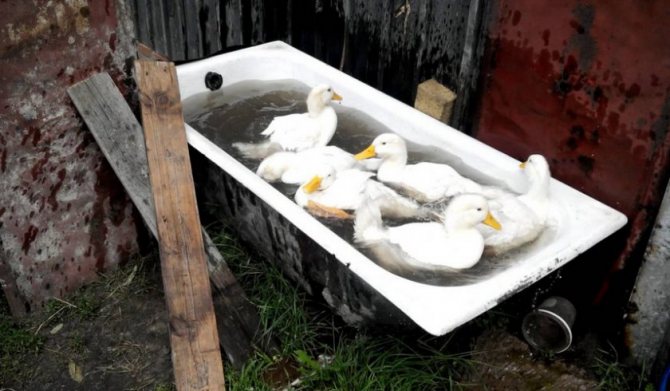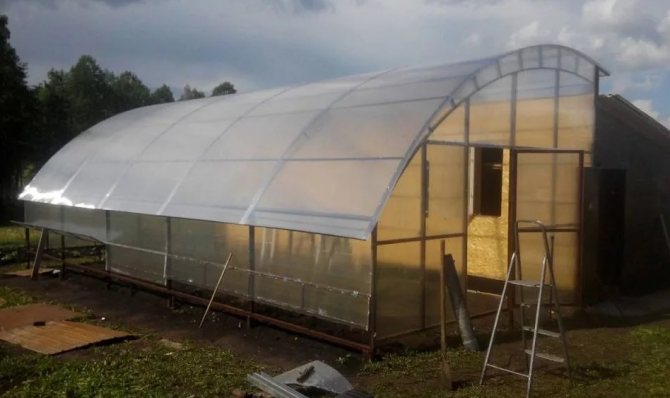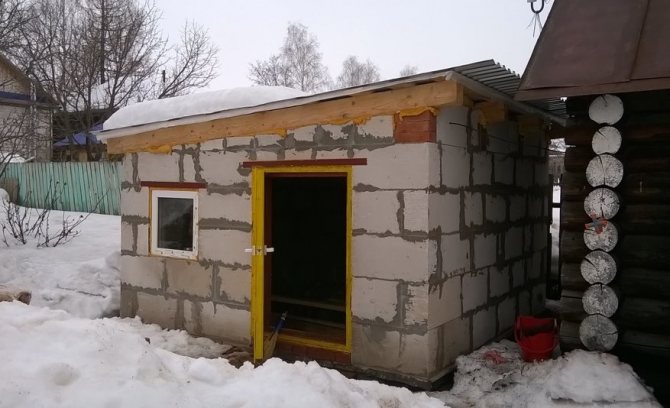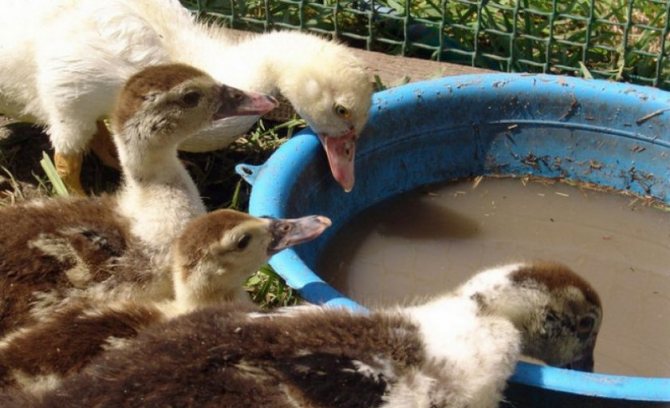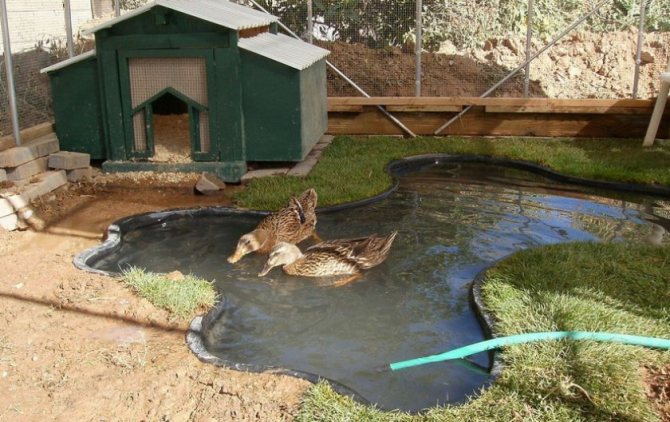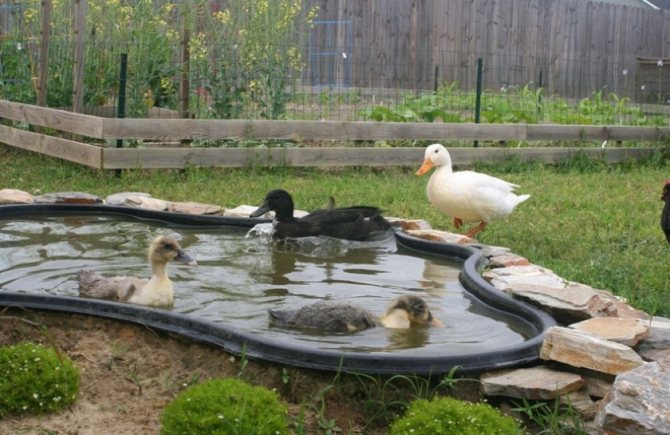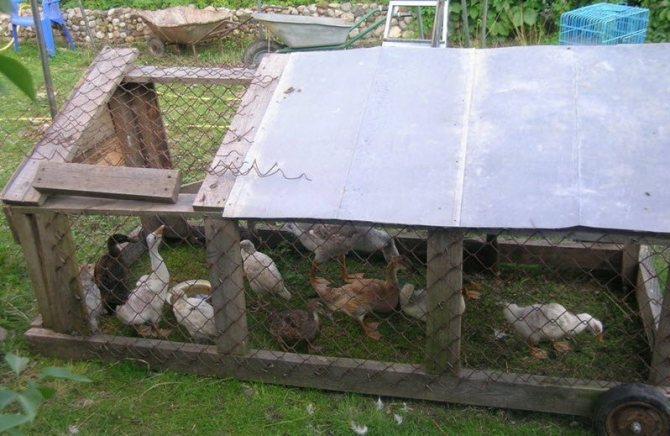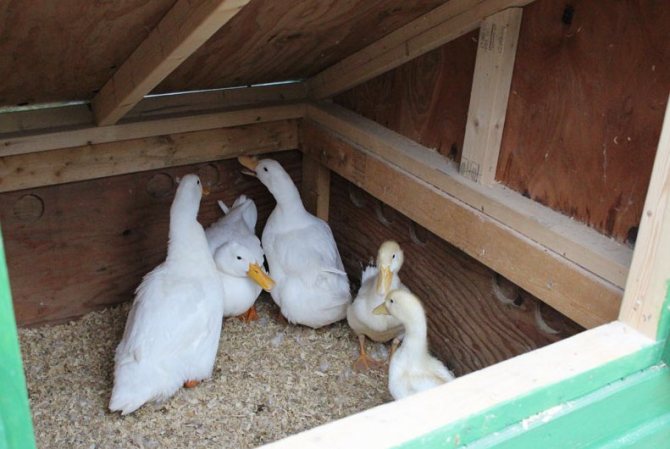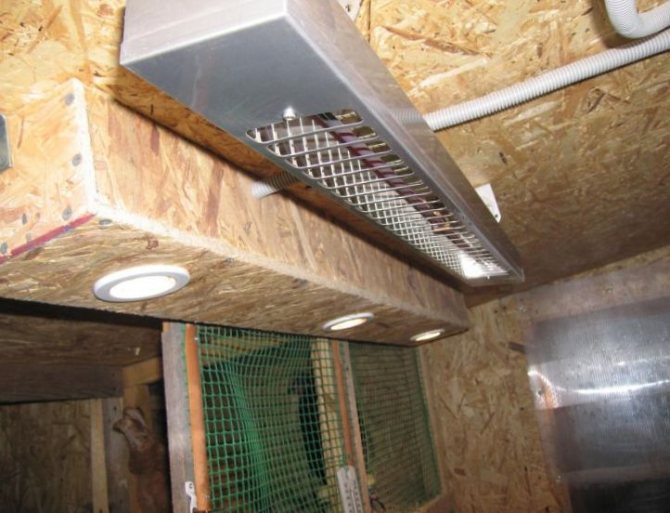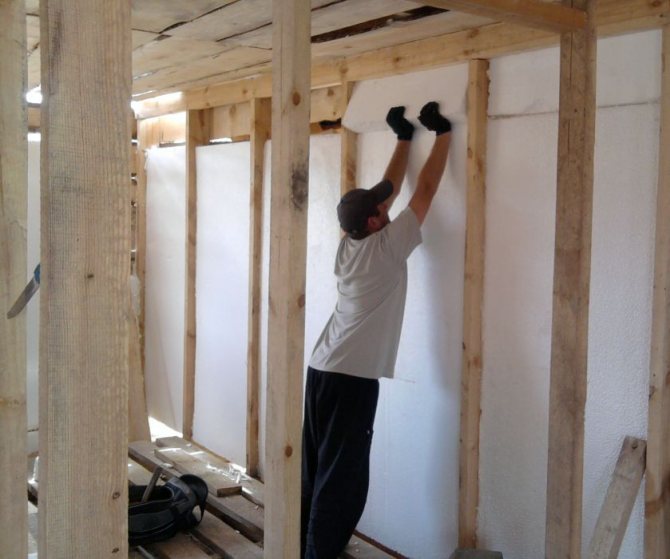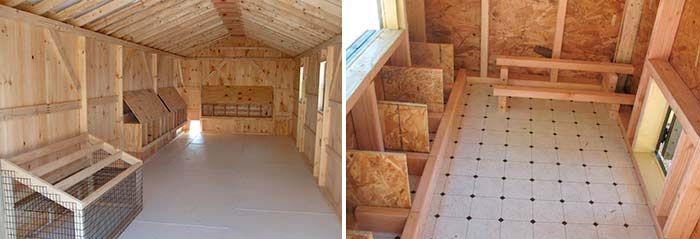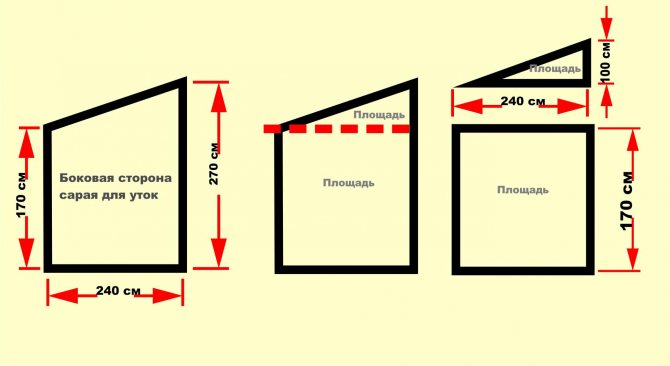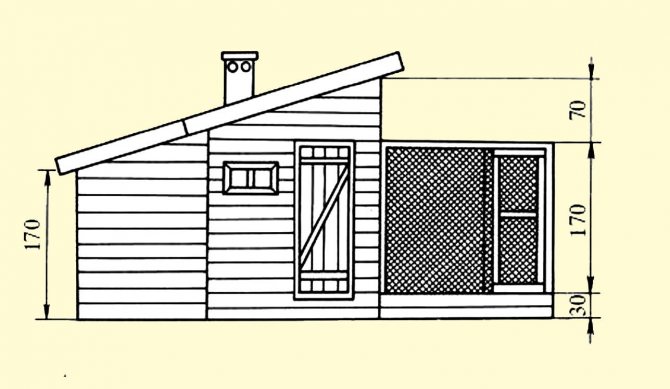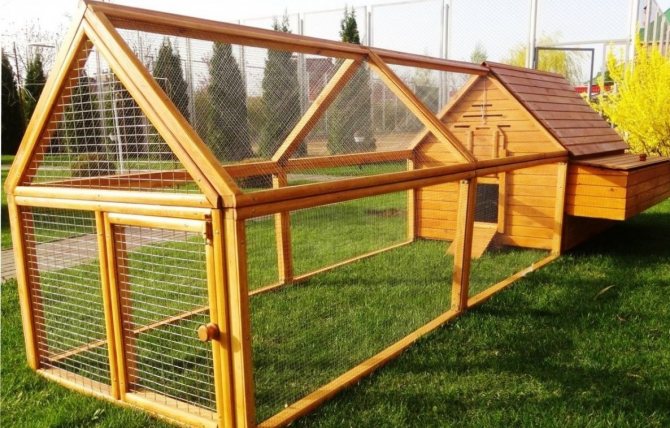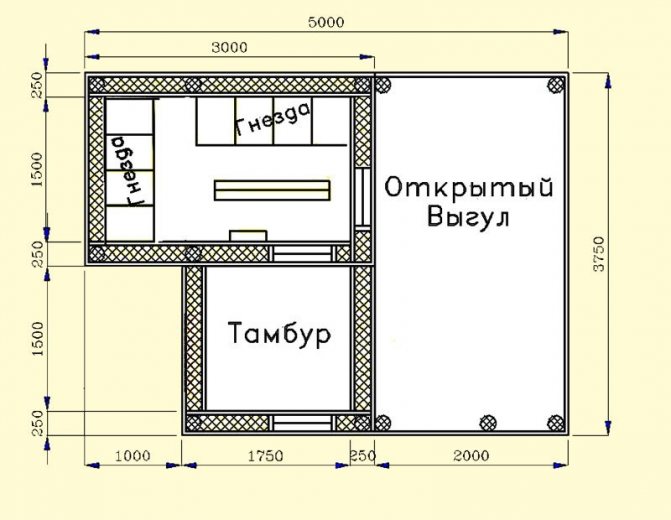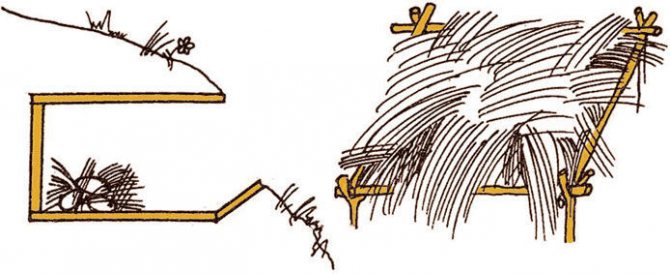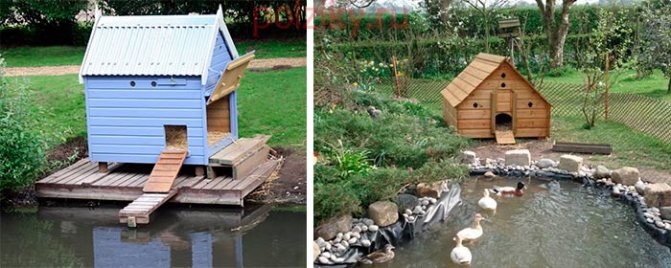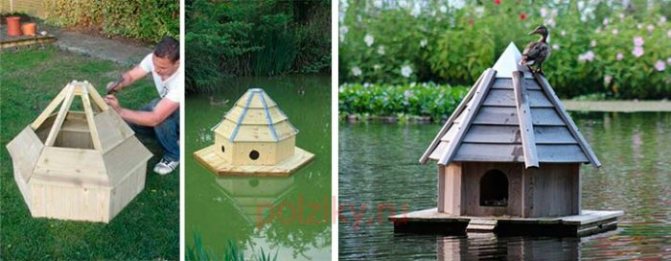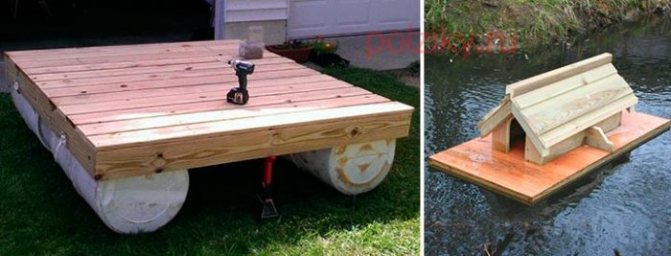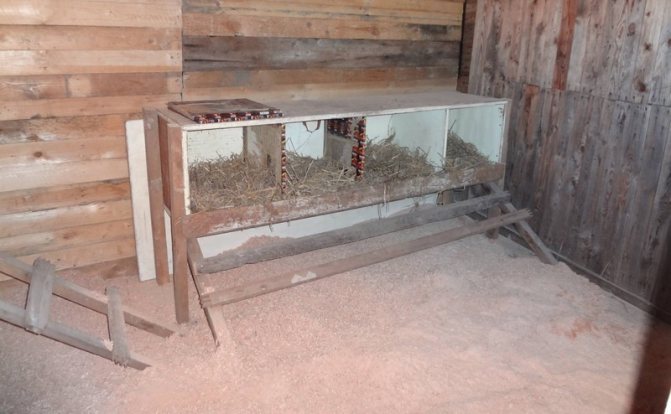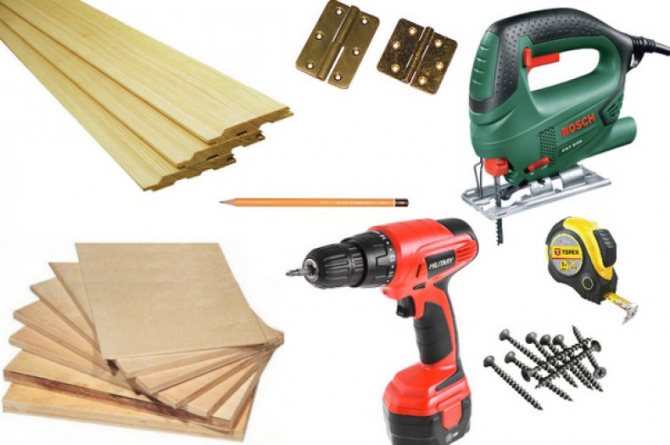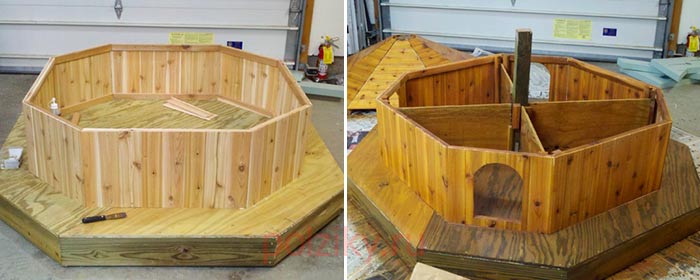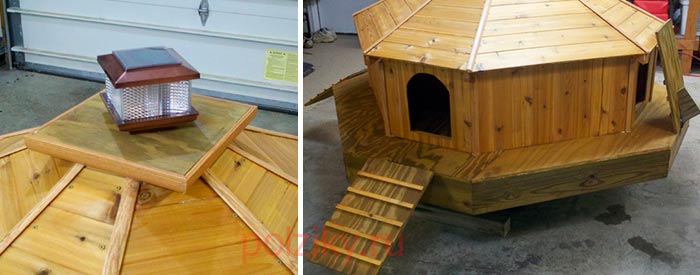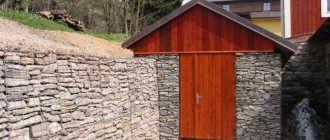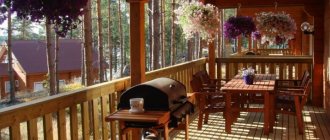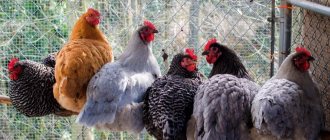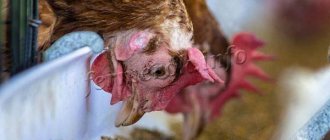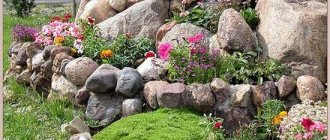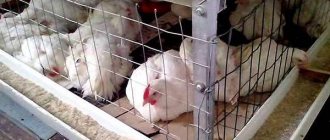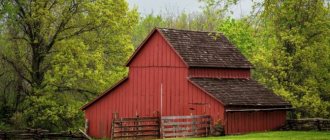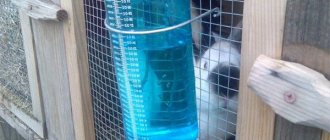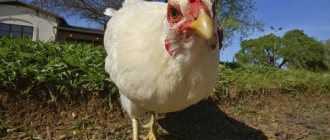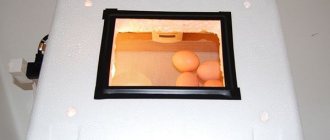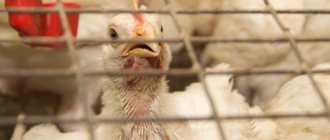»Poultry» Ducks »House for duck
0
495
Article rating
A comfortable space is created for keeping birds in backyards and summer cottages. Therefore, the owners are trying to build a house for ducks or a shed in which the birds can rest, eat and breed. There are several options for decorating the premises and the adjacent territory.
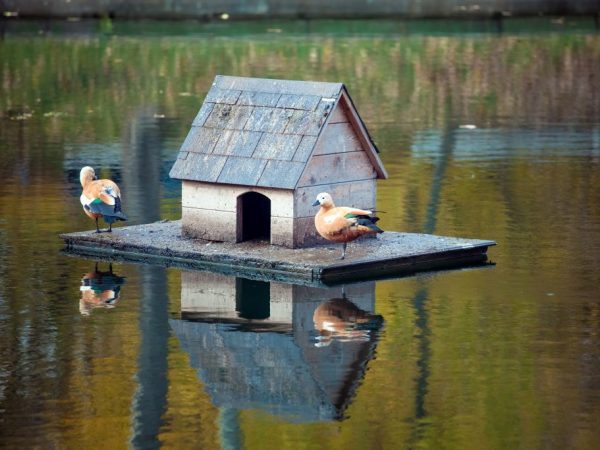
Ovoscopy of duck eggs
Types of corrals: advantages and disadvantages
There are several types of ducks.
A temporary pen is suitable if you have not yet built a stationary pen, and you have already started a duck. An ordinary wooden frame covered with a metal mesh temporarily acts as a temporary one. Undoubtedly, such a corral is easy to make in an hour, but as a permanent place to live, it will not work.
It takes much longer to build a stationary poultry house with a pen, besides, it will take a lot of material. But if you properly equip and rebuild the room, the duck will live in comfort, reproduce well and get sick less often.
A stationary poultry house without an aviary is suitable if your area is carefully protected from other animals, there is a clearing for grazing and a pond for aquatic procedures for ducks. The disadvantage of a barn without a corral is that the farmer will have to watch the duck all the time.
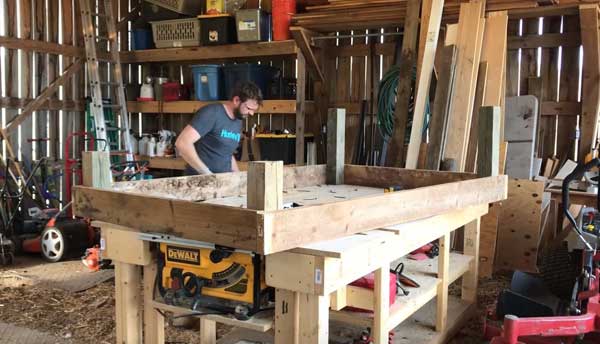

Primary requirements
Even a structure as basic as a duck shed requires careful preparation and planning. It is best to build it on a foundation, but if this is not possible, choose the right place for construction
Build a barn on a hill so that rainwater will flow down without forming puddles and mud. The room will not be damp, which is very good for the health of the ducks.
If your site does not have a hill, it can be built using earth, pieces of brick and coarse gravel. From above, the earth is covered with fine gravel or expanded clay.
It is important to keep the ducklings and adult duck safe from rodents. For this, the perimeter of the area is covered with clay with broken glass, after diluting the mixture with water.
Useful Tips
So that the water does not evaporate quickly, when choosing a place for a bath, you need to give preference to the most shaded area. It is convenient to place a pond on the edge of the site, otherwise the birds, after their water activities, will spread dirt throughout the courtyard.
If there is a natural depression, then it is advisable to organize a reservoir in this place.
Mini Pond in Elementary Pit
It is undesirable for leaves from plantations (bushes and trees) to fall into the water, since in the process of decay, a variety of pathogens will develop on them. Geese and ducks quickly pollute the reservoir. If you do not replace dirty water with clean water in a timely manner, it will deteriorate and bloom. Then the lake will quickly turn into a swamp. Therefore, you first need to provide a drain and a systematic supply of water.
Water is poured into the bathhouse using a hose from the water supply system or pumped with a pump from the nearest water sources (well, natural reservoirs).
For the winter, the water must be drained, and the pit must be cleaned of silt and various debris.
Recommendations for novice farmers:
- Ducks love to swim. If there is no reservoir nearby, then the original water park can be made from a tractor tire.It is cut in two and both are filled with water. The pool for ducks or geese is ready. You need to change the water daily, as the birds heavily pollute it.
Why do adult ducks need a pen
In the warm season, the duck must be walked. This is necessary to increase its egg production and productivity. It is not necessary to build a foundation for such a building.
If you want the duck to be able not only to enjoy the fresh air, but also to nibble the grass in the paddock, try to place it in a green meadow. The traditional type of building is considered to be wooden posts with a stretched mesh.
The paddock will be relevant if several species of ducks live in a private yard at once. It is worth taking care not only of the walls, but also of the polycarbonate canopy to protect the bird from the rain.
A polycarbonate pen will be in demand during the winter season, as it retains a large amount of heat. But in the summer, it will be hot for the duck in such a building, so it is important to leave the doors open.
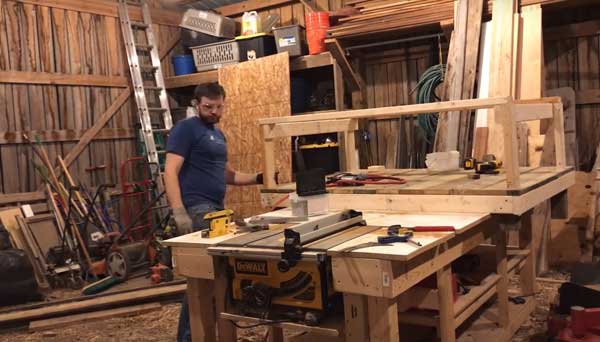

How many sockets do you need
Before making nests, you should calculate their approximate number. To do this, you need to know the exact number of females. Only every third of them becomes a brood hen. It is impossible to predict exactly how the ducks will behave, so it is better to make nests with a margin. A couple of extra houses are enough.
Types of nests:
- Open - ordinary boxes made of wood or plastic are used for them. A straw bedding is placed on the bottom.
- Semi-closed - there is no roof, and the walls are high.
- Closed - they are made in the form of houses, there must be a roof.
The latter option is considered optimal for incubation. Indo-woman feels more secluded and protected. But keep in mind that the nest must be absolutely clean. This also applies to the entire room. The bird will not sit on the clutch if insects disturb it. Therefore, before making a nest, you should take care of the order.
Building a summer enclosure
The summer duck house provides a place to relax in the shade of the sun, allows you to eat plenty of grass, walk in the fresh air and swim in the pond. The taste of meat in poultry living in such conditions is tender and juicy.
The summer shed is a mesh paddock with a wooden house attached next to it, where the duck can hide from the wind and sleep at night. The house is built slightly above ground level so that dampness does not form inside.
A duck pen for the summer is done in a couple of hours with pre-prepared materials and tools. A place without puddles and dirt in the sun is selected, and excess debris is cleared.
In the sun, drinking water quickly heats up and goes out. It is important to equip the summer pen with a large drinking bowl and regularly change the water in it. Also for the summer enclosure is a canopy where the duck can take shelter from the rain.
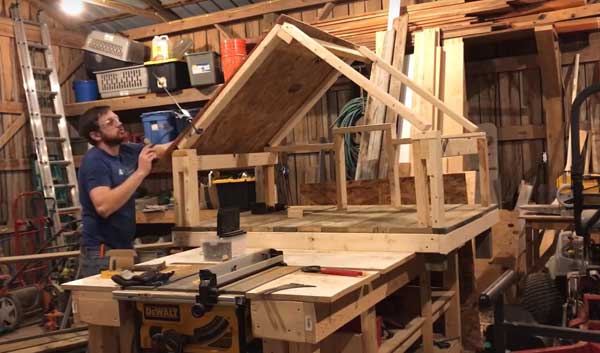

What you need to do to prevent the pond from stinking
Artificial ponds, favored by ducks and geese, can stink too quickly. This is due to the natural process of decomposition of organic matter in water. To avoid this problem, the pool must be equipped with a pump-aerator.
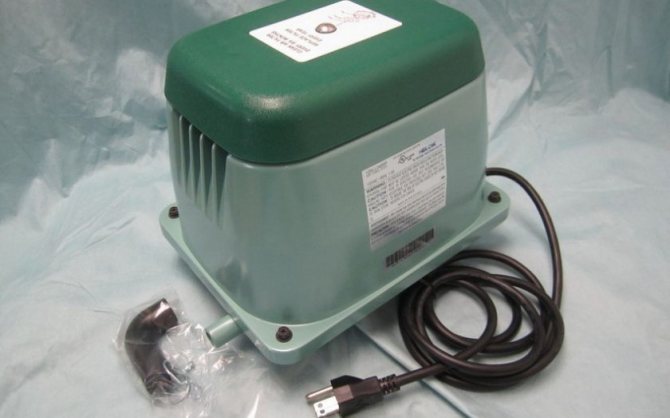

If an unpleasant odor persists even after changing the water, it is necessary to add special chlorine-containing agents to the liquid. However, then the birds will not "visit" the body of water until the pungent smell of the chemical has completely dissipated.
Building a winter shed
The main criterion for choosing the location and direction of construction is the side of the world. The entrance and windows of the duck room must always face south. This will allow more heat and light to come from the sun, which is important for the well-being of the duck.
The winter barn is a permanent building in which the duck will be warm and comfortable in winter. If desired, the poultry house can be combined with a summer option, in which the bird could freely go out to graze and walk in the warm season.
Outside and inside the winter shed, small mesh boxes are made, as houses for ducklings. Such structures are very practical, as, if necessary, they can be lifted and moved to the desired place.
Inside a warm shed, nests for brooding ducks are arranged, lighting and ventilation systems are equipped, and they are supplemented with thermal devices to maintain optimal humidity and temperature. Details below.
Possible problems
Novice poultry farmers should be aware of the difficulties they may have in equipping nests and incubating chicks and prepare in advance.
Most often, the owners are faced with the reluctance of ducks to rush in an equipped place. This problem can be solved by placing a false egg or by transferring the chosen laying container to the house.
There are situations in which two ducks sit in 1 nest. There are several options for solving this problem:
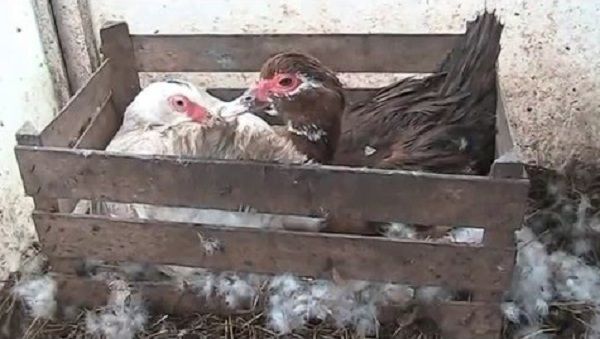

In the photo, two ducks sit in 1 nest.
- organization of another house for one of the Indo-girls in a different equipped room;
- inconspicuous separation of eggs in 2 nests (provided that there are too many of them for one muscovy duck);
- some poultry farmers let the situation take its course, hoping that the Indo-girls will independently assign responsibilities and roles.
Occasionally situations arise when duck ducks will mix up their nest. This situation is possible if there are several houses nearby. In this case, the owner can transplant the Indoor himself to the desired place.
Video - What to do if the Indowka messes up the nest
Ejection of eggs by the female from the nest. This happens for several reasons:
- natural selection, which is carried out by a brood hen, discarding unusable eggs;
- moving the nest (it is strictly forbidden to transfer the equipped Indoor house);
- human intervention in the process of incubation and hatching of offspring.
Exit of the female from the nest. It is almost impossible to bring the hen back. If an Indo-duck decided to take on the responsibility of caring for the hatched ducklings she saw, she left because of inappropriate conditions of detention, then the poultry farmers should take the eggs to the incubator or try to discreetly place them on other hens.
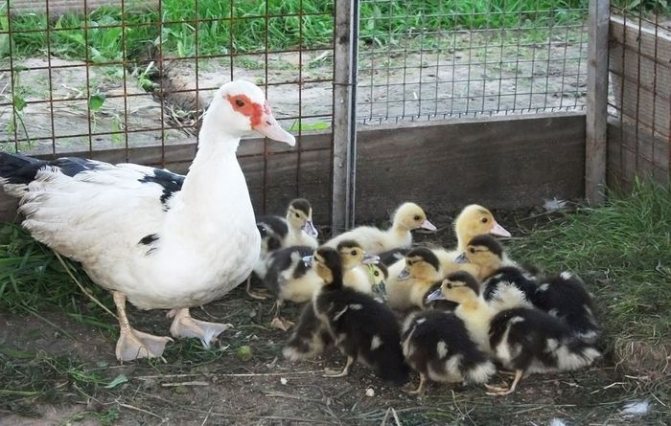

If the Indo-duck decided to give up the disembarkation and began to care for other ducklings, it will no longer be possible to return her to the nest
Choosing a place for the future barn
We have already said above that it is better to determine the place for the barn on a hill. There should be no puddles, mud, swampy areas nearby. The entrance of the barn is placed facing south.
It is good if the shed is located in a place sheltered from strong winds by trees and shrubs.
For ducks, the presence of a reservoir is important. Birds that spend time on the pond during the summer season will significantly save your feed budget. If there is no lake near the site, read the article "Building a reservoir for ducks in a summer cottage with your own hands."
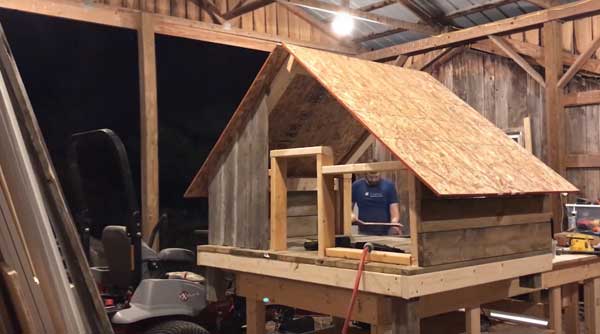

We plan the size of the building
Scheme for calculating the total area of the poultry house: for 2-3 medium-sized poultry, one square of area is needed. So, a shed for 10 ducks should be at least 3.5 square meters. The height of the duck house is at least two meters.
Let's round the value to four squares. You can make a building two by two meters, or one by four. In this case, turn the long part of the wall to the south side. The optimal dimensions for width and length are considered to be 250 by 150 centimeters.
As for the paddock, there is half a square meter for one duck. Therefore, five squares are enough for 10 heads.
It is not necessary to draw drawings if you are building a house and a pen for a duck on your own, it is enough just to mark the place with pegs, having previously measured the territory.
Duck house for 10-12 birds: designs and drawings
If the number of birds on the farm is up to 12 individuals, then no more than 4 sq. m, and places for walking - up to 7.5 sq. m.The length of the structure is 0.3 m, the width is 0.2 m.
View from above:
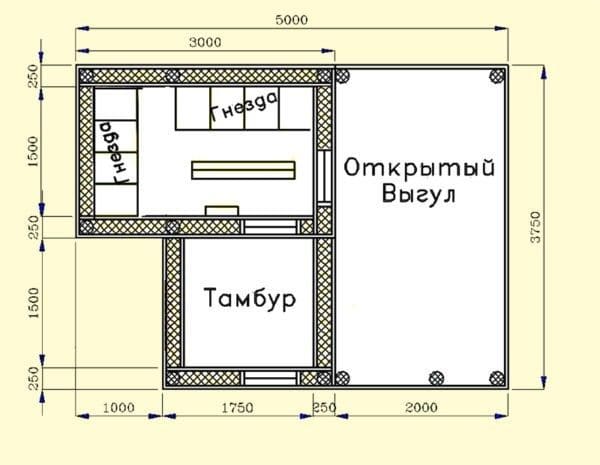

Side view:
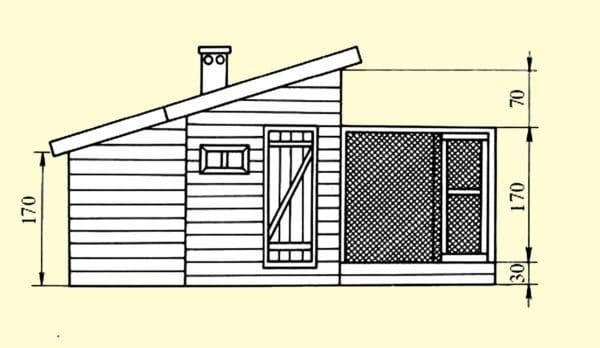

In accordance with the drawing, it has dimensions of 180 × 175 cm. For ventilation, the shed is equipped with windows that open to the inside and outside of the building. To facilitate bird care, a door is installed in the walking area.
Materials and tools for building a house
The most popular materials for building a barn are:
- wood;
- brick;
- aerated concrete;
- polycarbonate.
In any case, they will have to be additionally insulated.
The tree is considered an environmentally friendly product, but it is more susceptible to rotting and destruction than others. Shed construction timber should be free of knots, cracks and other mechanical defects.
Brick is a practical material that has a relatively low cost. Polycarbonate retains heat well, but in the summer season it will be unbearably stuffy in such a building.
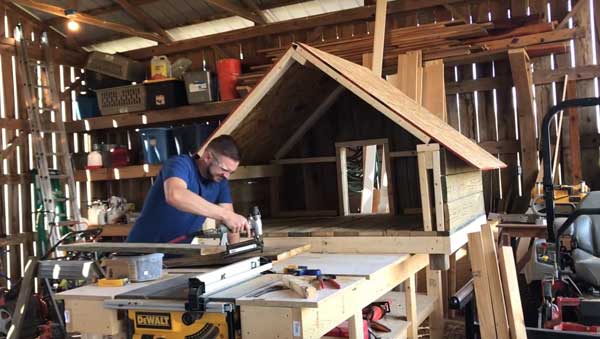

Aerated concrete requires good processing and additional ventilation to remove moisture. Otherwise, the barn will be constantly damp, which will lead to the development of harmful microorganisms and fungus.
The materials for the foundation are sand, cement, reinforcement and concrete. For the roof, the ideal solution would be timber, chipboard or polyurethane slate. You will also need mineral wool for insulation, polyurethane foam, corners, roofing material, bituminous mastic, enamel and expanded clay.
Before you start building a house for ducks with your own hands, prepare the necessary tools: a shovel, electromechanical units for sawing wooden beams, a carpentry kit, as well as hand tools.
What can be built from
Indoor houses can be made from any scrap material that is available on your farm. And this could be:
- any barrel;
- plastic bucket;
- wooden or plastic box;
- cardboard box
- Wicker basket.
Agree, it is very important to provide the bird with a comfortable development environment. Read about how to build a house for Indo and Mandarin ducks with your own hands.
The most important thing here is that these containers are suitable in size and design. The most interesting thing is that sometimes a duck chooses a nest for itself from an object that you did not even think to use for these purposes. In this case, you need to take into account the wishes of the bird and just put the item you like in a suitable place.


Well, if you decide to make a nest with your own hands, then chipboard, plywood, wooden boards, beams, old wooden furniture, etc. are suitable for this.
Important! For each Indoor, it is best to make individual nests and place them in different places. Well, if there is no room for this, then make a common house, but make strong partitions. This will make the birds more comfortable.
Step-by-step instructions for building a barn
Building the foundation
The place for the future duck shed is cleared of all sorts of debris and stones, a hole 20 centimeters deep is dug around the perimeter. Holes are made under the pipes, into which they are subsequently dug in.
Reinforcing bars are placed inside the pipe, sand and gravel are poured, after which they are poured with concrete. The space between the pipes is covered with sand, pressed tightly and covered with expanded clay to remove moisture.
The distance between the pipes should not exceed 75 centimeters. The pipe itself should be 20 centimeters higher from the level of the pit, and the fittings should be 25 centimeters higher.
After two weeks, the concrete mixture is completely dry. Wooden beams are put on it in order to build a future barn on top. In wooden logs, holes are drilled with the diameter of the size of the reinforcement, after which they are placed on the pillars.
To insulate the floor in the barn, two layers of roofing material are used. And the wooden scaffolds are fastened together with self-tapping screws to prevent shifts.
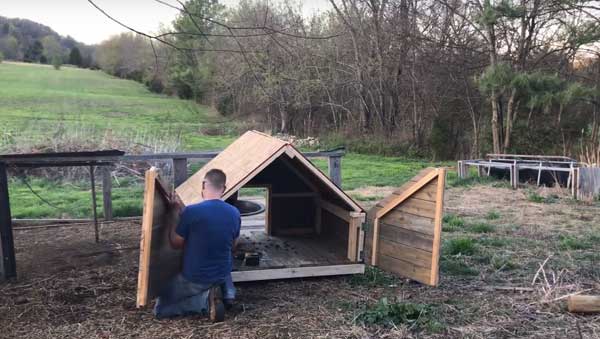

Building walls
After fixing the frame of wooden planks on the pipes, you can start building the walls of the barn.To do this, vertical posts are attached around the perimeter, fixing them with corners and self-tapping screws.
At this stage, frames for future windows and doors are installed, transverse struts are created for structural reliability. The top is decorated with a roof frame made of wooden beams.
For wall cladding of a house for ducks, OSB-plates, chipboard or hardboard are used. The former are considered practical and modern materials.
From the inside, the cells formed by the pillars and the outer sheathing are sheathed with mineral wool using wooden laths and nails.
A film is laid on top of the cotton to protect it from moisture. Gaps and crevices are filled with polyurethane foam, after which the inside of the shed is also sheathed with plates. The finished wall is a sandwich that reliably protects the ducks from the cold.
The outside of the house is painted with enamel to protect it from the weather, or sheathed with any other material available to you.
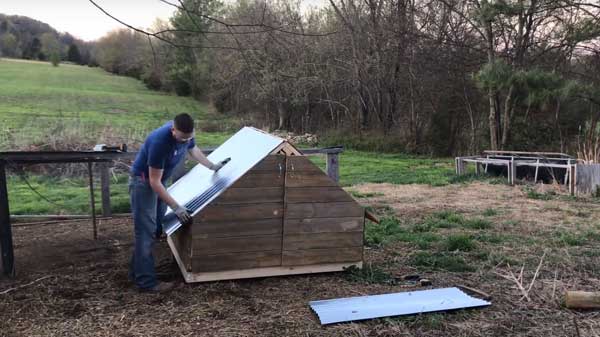

We equip the floor and roof
The roof of the future barn for Indo-duck or other duck species, like the walls, can be decorated with slabs, having previously been insulated with a layer of mineral wool. After that, the slabs are covered with two layers of mastic, and then laid on top of the slate.
The floor, covered with roofing material, is covered with a layer of expanded clay for additional heat and moisture removal. OSB boards are placed on top to create a rough version of the layer. Wooden logs are laid on top of the slabs, which are the final layer of the floor.
How to make a pen with your own hands
A duck without a walk will not be able to feel good, reproduce well and give healthy offspring. Therefore, even at the initial stage of building a barn, provide a place for a corral.
Wooden blocks are installed along the perimeter of the future corral at a distance equal to the width of the mesh. Before digging them into the ground, the perimeter can be formed with a moat into which a mixture of clay and broken glass is poured to protect it from rodents.
According to the rules, the height of the future corral is 2 meters, no less. Otherwise, the duck can fly over the walls and escape. If you want to otherwise limit the bird's ability to fly, trim the feathers along the edges of the wings. Read more about this in the article "How to properly clip the wings of a duck."
Decorate part of the enclosure with an inclined canopy that protects from rain, snow and the hot sun. The pen is equipped with drinkers and feeders in the same way as the duck house itself.
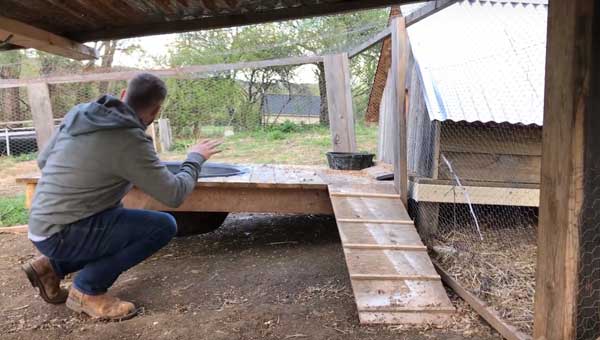

Humidity and temperature conditions
In no case should the temperature inside the duck building be brought below zero degrees. The optimum temperature for ducks is 18-20 degrees, especially at the time when the bird starts to rush.
In brooders for ducklings up to one month, the temperature should be 29-30 degrees. As soon as the chicks are one week old, the temperature is gradually reduced to 20 degrees.
The humidity inside the barn is maintained between 65 and 70%. Too high a level leads to sticking of feathers, a deterioration in well-being and a decrease in the immunity of the ducks. Dry air also adversely affects the health of ducks.
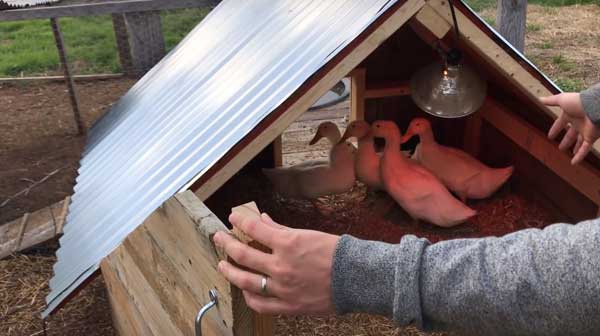

Number of nests in relation to livestock
And the last thing you need to know is how many nests you need to prepare, based on the size of your duck family. To do this, count how many females you have, and taking into account the fact that only one of three ducks sits down to incubate the offspring, calculate the required number of places for laying. Make a couple of spare just in case.
It will probably be useful for you to read everything about the egg production of Indo-women at home, the benefits and dangers of Indo-women eggs, and also to find out when Indo-women begin to lay eggs at home.
If you decide to breed Indo-Dogs on your own and want to get good results, then you will undoubtedly have a lot of trouble. But when the bird lays eggs in the nest you have prepared, hatches them, and in a month with a small tail, little ducklings will appear, your efforts will be rewarded.
Barn ventilation
Ventilation is necessary so that fresh air can enter the duckhouse around the clock and musty air escape. The droppings on the floor of the barn give off ammonia fumes, which have a negative effect on the appearance and well-being of the entire livestock.
Artificial ventilation will be the best solution to all problems. As a rule, pipes are laid over the shed with a outlet to the outside. It is best to use a coaxial system.
Two pipes of different diameters, inserted into each other, ensure good outflow and air flow. In addition, the air entering between the walls of the pipes warms up from the outgoing air, which provides warmth inside the shed.
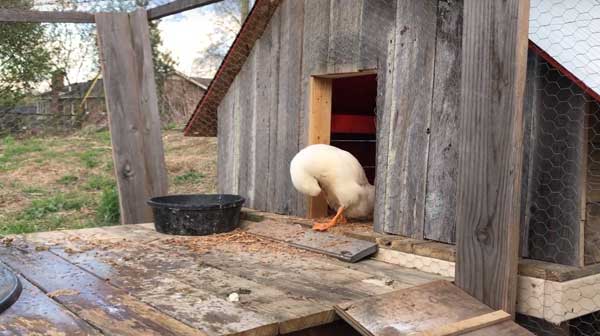

Barn lighting and disinfection
Natural light must enter the house through windows. They should account for 10% of the total area of the premises. For example, for 7 squares of a shed, two windows of 50 by 50 centimeters are made out.
Windows should open on both sides to ventilate the room at any time of the year. Daylight hours for an adult duck should be 12 hours. During egg-laying, it is three hours longer.
As lighting fixtures, ordinary incandescent lamps are used, which are arranged in a metal mesh so that the ducks do not scorch their wings. The lighting rate from devices is 5 W per square meter.
Once the duck house is ready, the ducks must not be put in immediately. First, the walls, floor and ceiling are treated with a lime mortar: for 5 liters of water - 1 kg of lime and 100 g of salt.
You can replace lime with a soda solution in a ratio of 1 to 0.02 (or creolin: 1 to 0.05). After three days, litter is placed, only then the ducks are launched.


Interior decoration of the premises
The duck shed must be tailored to the needs of the birds. For winter poultry houses, the arrangement of the interior space is somewhat more varied and more complicated. Summer houses actually serve only for shelter, because their design is minimal.
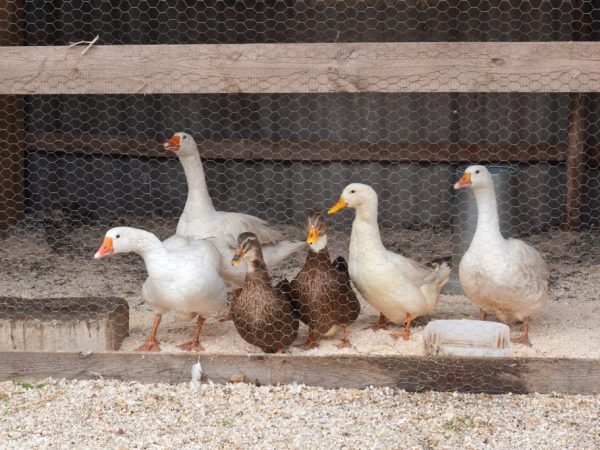

When building a duck house, it is necessary to provide for the possibility of creating a corral, because they need a walk
Premises for long-term keeping of ducklings, indoor ducklings and other breeds should be equipped with:
- walls are disinfected and painted with water-repellent paint;
- wired and installed 2-3 lamps with a power of up to 50 W to maintain the length of the day up to 12 hours in the winter season;
- the floor is covered with a litter made from a mixture of sawdust, straw and ash, which changes as it gets dirty and wet;
- feeders are installed in the corner of the house or along one of the walls 50-70 cm long for 3 adults or 10 ducklings;
- closed-type water troughs in close proximity to the feeding area;
- a box or basin with a mixture of sand and ash for preventive baths, necessary for ducks to get rid of parasites, the content changes 1-2 times a month;
- boxes serving as nests for laying ducks, in which offspring will be hatched, are placed on the wall farthest from the feeder at a height of 15-20 cm from the floor;
- a heater or infrared lamps to keep the shed warm in severe frosts;
- in the northern regions, a vestibule is attached to the main room so that cold air does not penetrate the birds when a person enters.

